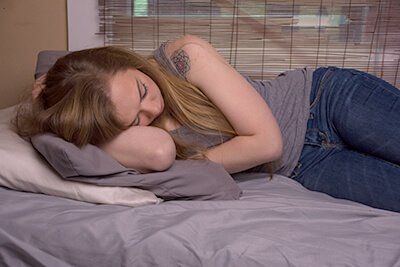 Lunesta (eszopiclon) is a hypnotic or sedative drug that is in a non-benzodiazepine class of drugs (the cyclopyrrolones). It has similar actions to the benzodiazepines in that it increases levels of gamma-amino butyric acid (GABA), which is the major inhibitory neurotransmitter in the brain. Increasing the activity of this neurotransmitter slows down the functions of the brain and allows individuals to relax and experience sedated effects.
Lunesta (eszopiclon) is a hypnotic or sedative drug that is in a non-benzodiazepine class of drugs (the cyclopyrrolones). It has similar actions to the benzodiazepines in that it increases levels of gamma-amino butyric acid (GABA), which is the major inhibitory neurotransmitter in the brain. Increasing the activity of this neurotransmitter slows down the functions of the brain and allows individuals to relax and experience sedated effects.
Lunesta is marketed as a treatment for insomnia and used to help individuals fall asleep. Drugs in its class are believed to have less potential for abuse and for the development of physical dependence than benzodiazepines, and these drugs do not have the extreme sedating effects that some of the benzodiazepines produce. Therefore, they are primarily designed to treat insomnia and not designed to treat anxiety disorders or seizures. However, an article in 2009 published in The New England Journal of Medicine suggested that there is some controversy as to whether or not Lunesta is actually effective in inducing sleep, as some independent studies have suggested that it is not significantly more effective than placebo. The drug may also be contraindicated for use in elderly individuals on a long-term basis.
The United States Drug Enforcement Administration lists Lunesta as a Schedule IV controlled substance. This means it has a sufficient potential for abuse and dependence. Despite this designation, initial studies by the drug’s manufacturer suggested that it does not produce physical dependence in individuals; however, the majority of anecdotal evidence does suggest that it has the potential to produce mild physical dependence. Physical dependence consists of the development of both the syndromes of tolerance and withdrawal.
Withdrawal from Lunesta
There is no formal recognized withdrawal syndrome associated with discontinuation of Lunesta, and there are no formal recognized withdrawal symptoms. Is important that people do not confuse the side effects of taking the medication with the symptoms of discontinuation or the withdrawal syndrome that is associated with stopping its use as these are often not markedly different. Side effects occur when one is taking the drug and are not related to the intended effects of the drug. Withdrawal effects occur as a result of discontinuing use of the drug when one has developed physical dependence on it.
There is no recognized identified timeline for withdrawal from Lunesta. The symptoms typically present themselves within 24-48 hours following discontinuation. Based on the anecdotal reports in the research, the timeline appears to adhere to the following course.
- Within the first 24-48 hours after the individual discontinues use of the drug, the most common symptoms are rebound insomnia and feelings of irritability, jitteriness, or anxiety. They typically peak rapidly.
- From two days to around seven days after discontinuation, a number of symptoms may appear that include issues with insomnia, irritability, anxiety, nausea, chills, sweating, fever, and cravings to take the drug. Rebound symptoms will tend to decrease significantly over this period of time.
- From the seventh to eighth day, an individual can expect a significant decrease in the intensity of any symptoms that they experienced initially. Individuals may still have issues with sleep, fatigue as a result of broken sleep, anxiety, and general feelings of malaise. Some individuals may continue to have issues with insomnia.
- Individuals who abuse drugs like Lunesta may experience lengthy periods of issues with depression, motivation, apathy, and cravings that are often referred to in many sources as a post-acute withdrawal syndrome (PAWS). While many individuals do experience the symptoms, they are not believed to be due to any formal withdrawal process but most likely related to other issues.
The process of withdrawal from Lunesta is not defined. It is most likely quite variable depending on the situation. Elderly individuals may experience more intense withdrawal symptoms, and individuals who abuses the drug will most likely experience more intense withdrawal symptoms as they will typically take the drug more frequently, take it in higher amounts, and are more likely to use the drug in combination with other drugs of abuse. Individuals who abuse drugs typically experience lengthier and more intense withdrawal syndromes due to these reasons and because of potential co-occurring mental health disorders. The presence of a co-occurring disorder often results in more intense and lengthier withdrawal syndromes compared to individuals without these disorders.
